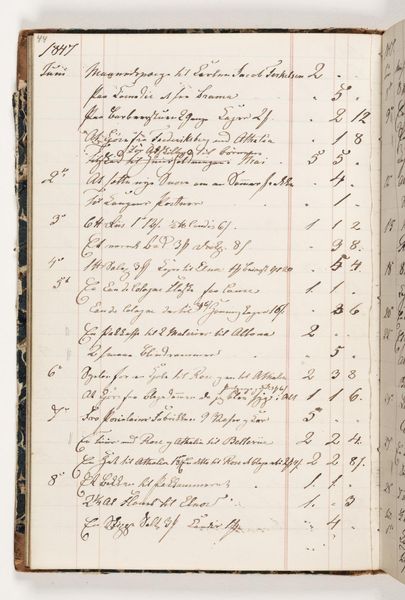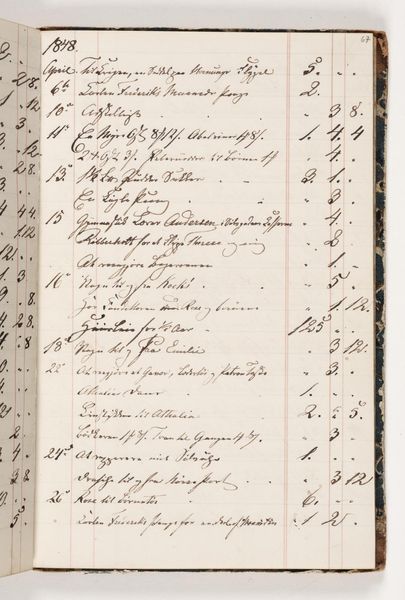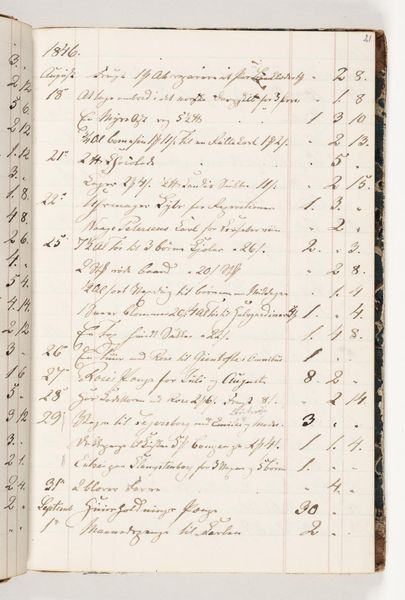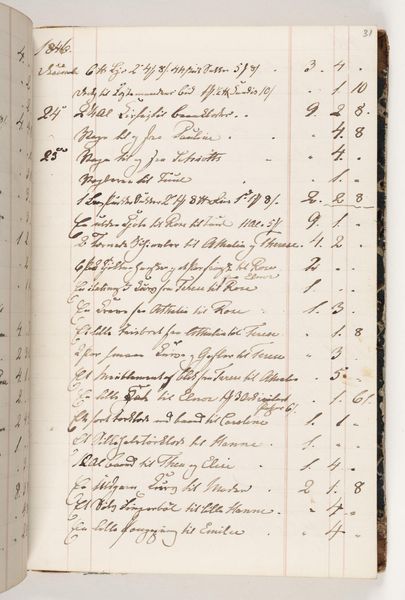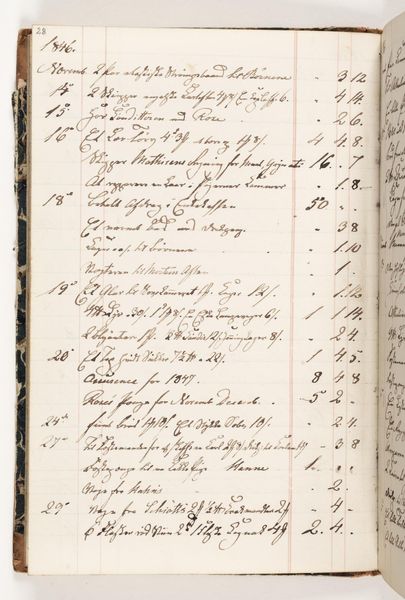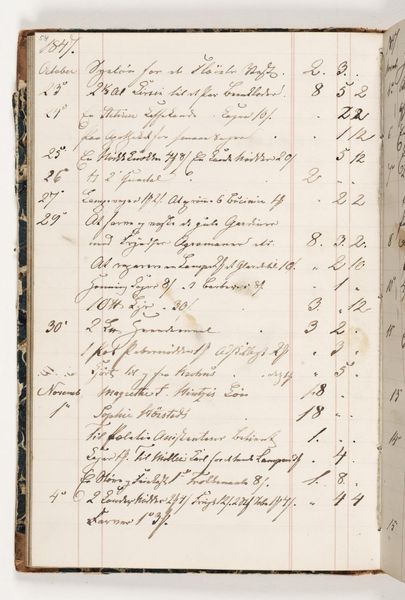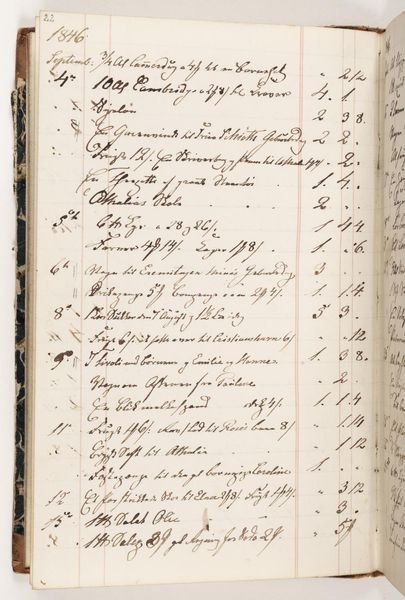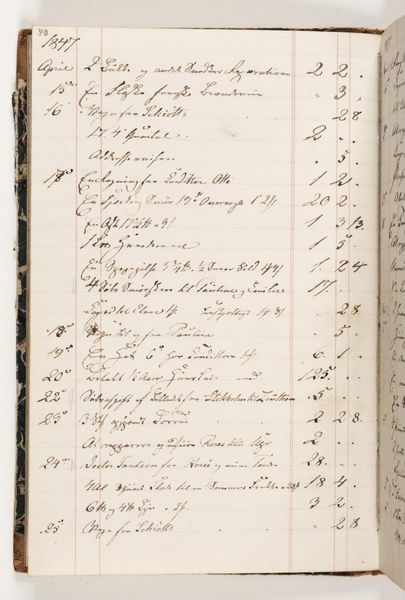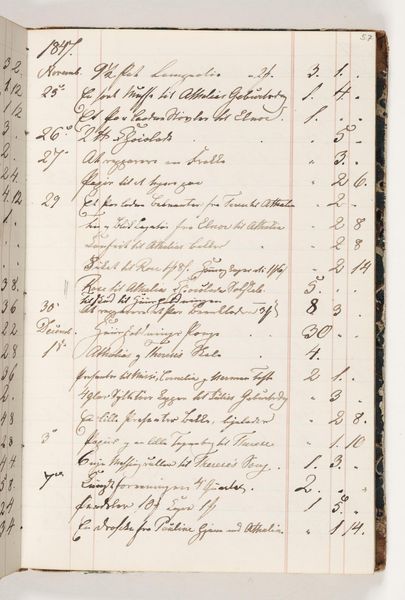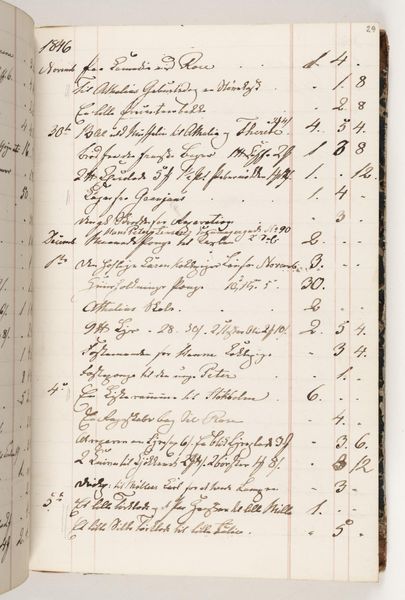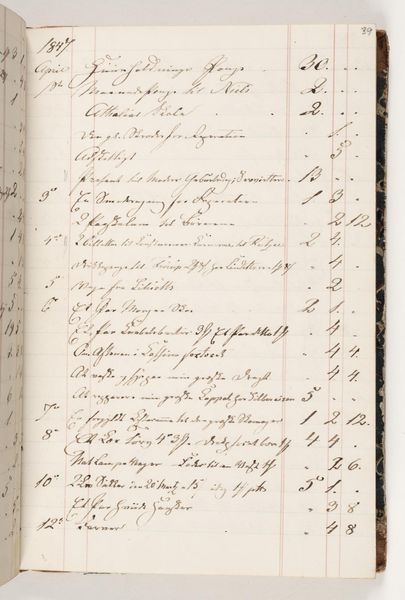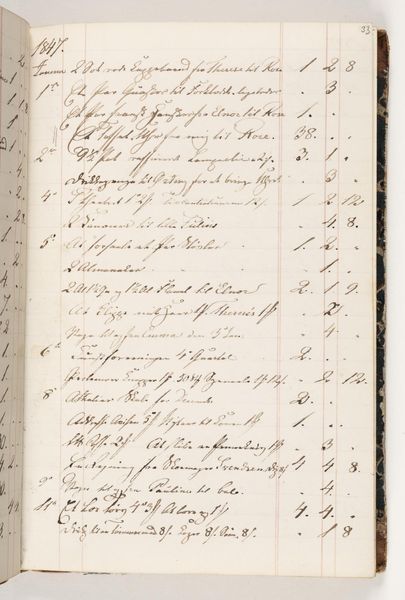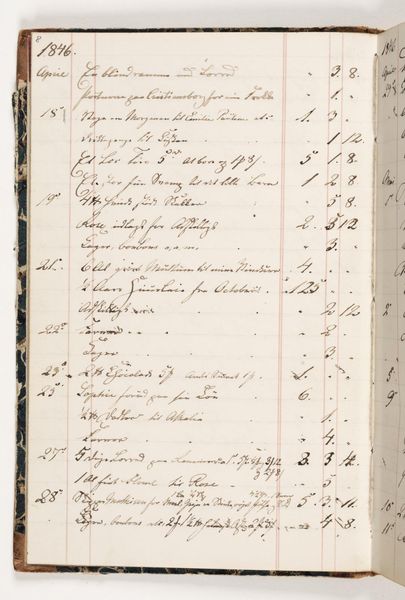
drawing, paper, ink
#
drawing
#
paper
#
ink
#
romanticism
#
watercolor
Dimensions: 200 mm (height) x 130 mm (width) (bladmaal)
Editor: This is *Regnskab 1846*, or "Accounting 1846," by Martinus Rørbye, created in 1846. It's an ink drawing on paper held at the Statens Museum for Kunst. I'm immediately struck by the visual texture created by the handwriting and the neat columns. How would you interpret this work within its historical context? Curator: Well, first off, what jumps out is the sheer mundaneness of it, right? Rørbye, a Romantic painter known for his exotic travel scenes, making an accounting document! To understand this, we have to think about the art world as a *system*. Artists were dependent on patrons, institutions, and, well, surviving daily life! This wasn’t just "art for art's sake." What do you notice about how this diverges from his paintings? Editor: I see…it lacks the vibrant colors and landscapes I associate with Romanticism. It seems so ordinary compared to those heroic scenes. Is Rørbye commenting on something? Curator: Possibly. Or perhaps it reveals a tension between the idealized images he was commissioned to create and the material realities of being an artist in 19th-century Denmark. Think about how the burgeoning art market shaped artistic production, forcing artists like Rørbye to reconcile their creative aspirations with economic necessities. Where does this image of *labor* fit with images of *inspiration* and *genius*? Editor: So, it shows the behind-the-scenes of art creation... a counterpoint to Romanticism's ideals. I never thought of it that way. Curator: Exactly! It challenges the dominant narratives and exposes the complex socio-economic factors that underpin artistic practices. This piece reminds us to consider not only *what* art is made, but *how* and *why*, which provides deeper understanding and more inclusive art histories. Editor: I’ll certainly look at Rørbye, and all art, a bit differently now. Curator: Good! Now you're thinking like a true art historian!
Comments
No comments
Be the first to comment and join the conversation on the ultimate creative platform.
